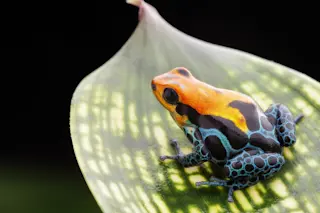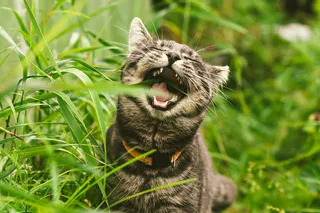The chemical weaponry of this beautiful little dart frog come at a high evolutionary cost. Photo by Dirk Ercken Poison dart frogs are some of the most stunning species on Earth. But their vivid colors aren't for aesthetics: they're meant as a warning to potential predators. For while these frogs are visually stimulating, they are also armed with potent toxins. The poisons in their skin are so powerful that local tribes have been known to create deadly darts simply by rubbing them on the frogs' backs — hence the name. One might expect that the evolution of such a successful defense would allow these frogs to diversify faster than their relatives and outcompete their kin for resources and habitats — and, according to a study published in the early edition of Proceedings of the National Academy of Sciences this week, their toxins do give them a speciation advantage. But, their ...
Poisonous Problems: Chemical Defenses Come With Evolutionary Cost
Discover how poison dart frogs use chemical defenses for survival, yet face higher extinction risks despite their speciation advantage.
More on Discover
Stay Curious
SubscribeTo The Magazine
Save up to 40% off the cover price when you subscribe to Discover magazine.
Subscribe













